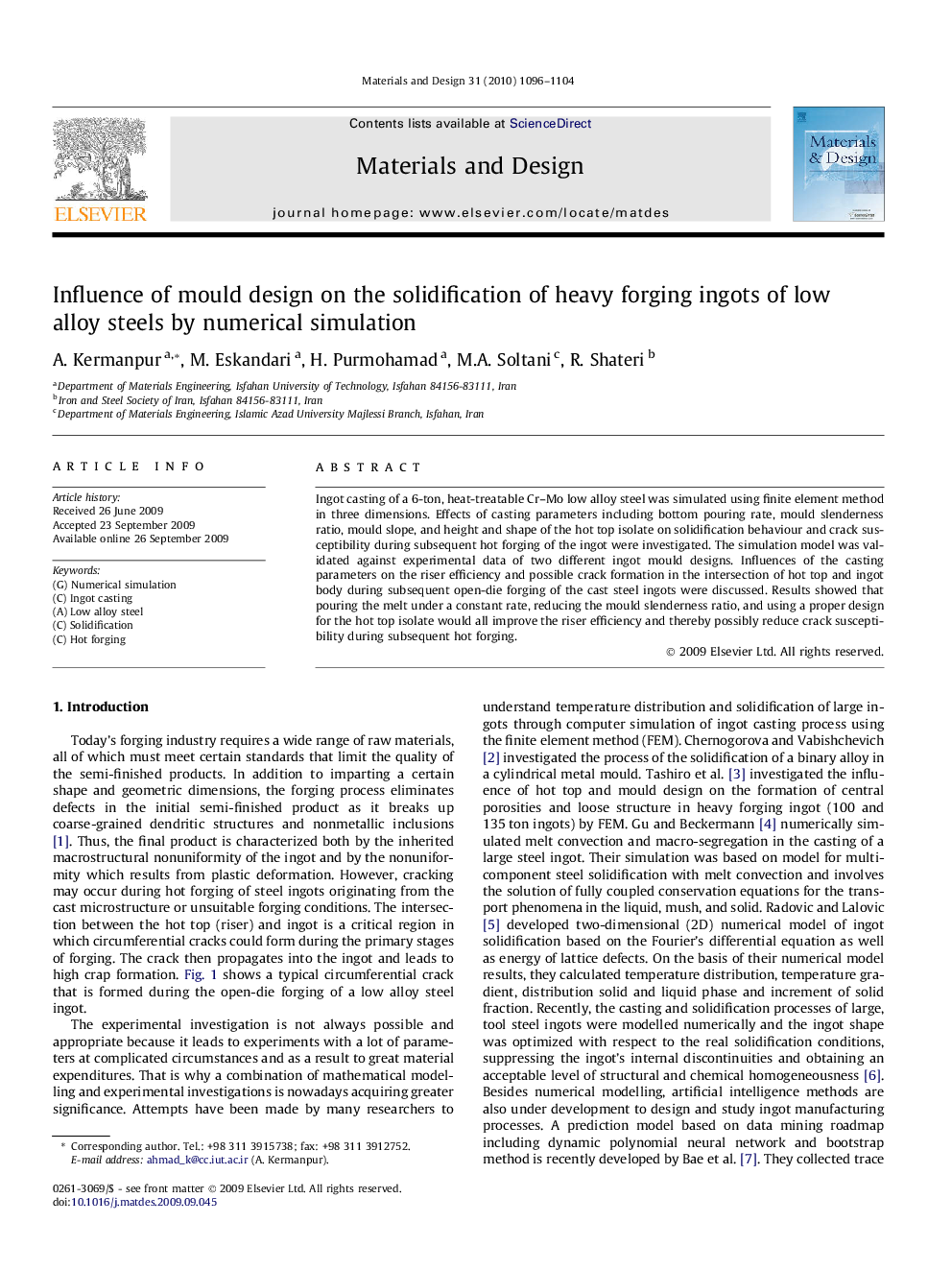| Article ID | Journal | Published Year | Pages | File Type |
|---|---|---|---|---|
| 832474 | Materials & Design (1980-2015) | 2010 | 9 Pages |
Ingot casting of a 6-ton, heat-treatable Cr–Mo low alloy steel was simulated using finite element method in three dimensions. Effects of casting parameters including bottom pouring rate, mould slenderness ratio, mould slope, and height and shape of the hot top isolate on solidification behaviour and crack susceptibility during subsequent hot forging of the ingot were investigated. The simulation model was validated against experimental data of two different ingot mould designs. Influences of the casting parameters on the riser efficiency and possible crack formation in the intersection of hot top and ingot body during subsequent open-die forging of the cast steel ingots were discussed. Results showed that pouring the melt under a constant rate, reducing the mould slenderness ratio, and using a proper design for the hot top isolate would all improve the riser efficiency and thereby possibly reduce crack susceptibility during subsequent hot forging.
